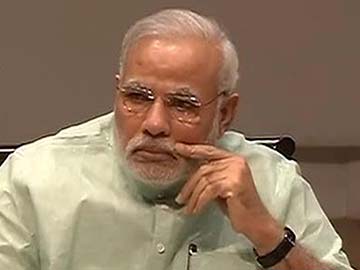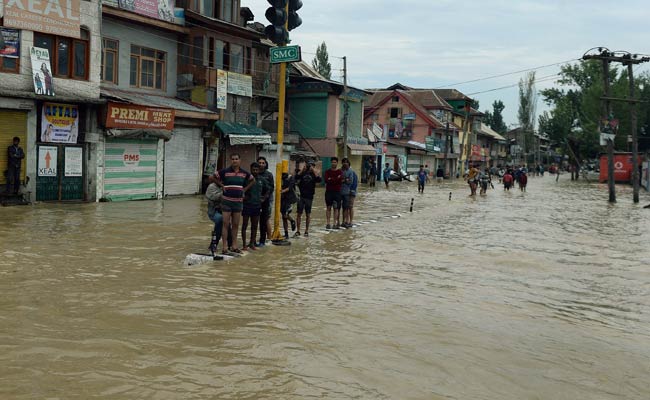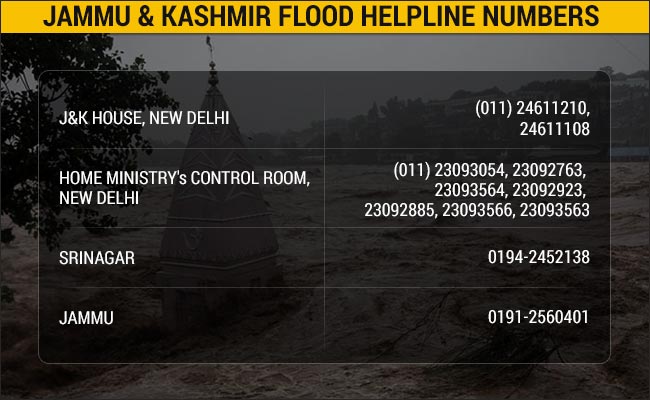Text of Prime Minister Shri Narendra Modi’s remarks at the Indian Community Reception in Tokyo जापान में बसे हुए सभी मेरे भारतीय भाइयों एवं बहनों,
ये जो बच्चे गीत गा रहे थे, मैं करीब 25-30 साल पहले हर दिन इस गीत को गुनगुनाता था। यह मेरा बड़ा प्रिय गीत था। तो आज मेरी सारी थकान उतर गई और उसी मिजाज से बच्चे गा रहे थे, जो ओरिजिनल है। जबसे मैंने सुना है, वैसे ही मैं भी गुनगुनाता था। आज भी मेरा मन कर गया तो आपके साथ जुड़ गया था। इन बच्चों को बहुत बहुत बधाई। ये समझ लेते हैं, जो मैं बोल रहा हूं?
जापान मैं पहले भी आया हूं। यहां के भारतीय समाज से भी मेरा मिलने का अवसर मुझे हमेशा मिला है। आप लोगों को सुनने का भी अवसर मिला है और कुछ कहने का भी अवसर मिला है। दुनिया के किसी भी देश में जाइए, तो अगर कोई भी भारतीय मिलता है तो, दो-तीन चीजें प्रमुख रूप से आती हैं। साफ एयरपोर्ट पर उतरे और ऐसा हुआ। टैक्सीवाला मिला, तो ऐसा हुआ। साफ शौचालय, वाश रूम। ये चार-पांच चीजें कॉमन सुनने को मिलती हैं। और बहुत स्वाभाविक है कि इतने सालों से यहां रहने बाद, यह सामान्य है और इसलिए मैंने देश में सबसे बड़ा एक काम जो उठाया है, वह है स्वच्छ भारत का।
कठिन काम है, लेकिन किसी को तो शुरू करना चाहिए। मैंने देशवासियों के सामने एक बात रखी है कि 2019 जो, महात्मा गांधी के 150वीं जयंती का वर्ष है और महात्मा जी को सबसे प्रिय अगर कोई चीज थी तो सफाई थी। आपने महात्मा गांधी के जीवन को पढ़ा होगा, कहीं बचपन में कुछ बातें सुनने को मिली होगी तो ये बात हमेशा आती होगी। वे सफाई के संबंध में कभी कंपरमाइज नहीं करते थे। बड़े अग्रणी रहते थे। आप वर्धा का आश्रम देखिए, साबरमति का आश्रम देखिए। बहुत ही सिंपल थे। व्यवस्थाओं की दृष्टि से कोई बहुत नहीं था, लेकिन सफाई के संबंध में कोई कंपरमाइज नहीं करते थे। इसलिए मैंने देशवासियों के सामने एक बात रखी कि महात्मा गांधी ने हमें आजादी दिलाई, इतनी बड़ी सौगात महात्मा गांधी जी हमें दे के गए, हमने महात्मा जी को क्या दिया ? कुछ तो हमें लौटाना चाहिए। और इसलिए मैं देशवासियों से कहता रहता हूं कि 2019 तक ऐसा साफ-सुथरा हिंदुस्तान बना दें और 2019 में एकदम साफ-सुथरा हिंदुस्तान महात्मा जी को अर्पित करें।
तो आप भी अपने रिश्तेदारों को चिट्ठी लिखते होंगे यहां से, लेकिन अब चिट्ठी तो नहीं लिखते होंगे, ईमेल करते होंगे, वाट्स अप पर बात करते होंगे। ट्वीटर पर दोस्ती बनाई होगी। माध्यम कोई भी हो लेकिन बात जरूर पहुंचाइए आप कि हमारे जापान में ऐसी सफाई होती है, आप भी यह काम कीजिए। अपने परिवार में कीजिए, अपने अड़ोस-पड़ोस में कीजिए। ये भी करने जैसा काम है, और मुझे विश्वास है कि आप भी इस काम को अवश्य करेंगे।
भारतीय समुदाय की एक विशेषता रही है और हम लोग इस बात का गर्व जितनी मात्रा में करना चाहिए, नहीं करते हैं। बड़ी दबी जबान में, हल्के-फुल्के, ऐसे करते हैं। विश्व में कहीं पर भी अगर भारतीय समाज गया, 100 साल पहले गया, 150 साल पहले गया, कहीं पर भी गया हो, किसी भी देश से, उस समाज से अब तक कोई शिकायत नहीं आई है कि हिंदुस्तानियों ने आकर ऐसा कर दिया, हमें लूट लिया। ये छोटे संस्कार नहीं हैं जी, ये संस्कार छोटे नहीं हैं।
विश्व का कोई भी समाज, कहीं पर भी व्यक्तिगत रूप से किसी से कोई गलती हुई होगी, अच्छा बुरा हो गया होगा। लेकिन समाज के रूप में दुनिया में कहीं से कोई शिकायत भारतीय समुदाय के लिए नहीं आई है। ऊपर से सुनने को क्या मिलता है भई, ये बड़े लॉ एबाइडिंग सिटीजंस हैं, बहुत ही सरल हैं, हमारी इकोनोमी में कंट्रीब्यूट करते हैं, लेकिन समस्या कभी पैदा नहीं करते हैं।
ये हमारी विरासत है। हमारी पूंजी है और पीढ़ी दर पीढ़ी संस्कारों से यह बनी है। और इसका श्रेय आप सबको जाता है। आपने ये करके दिखाया है। इसलिए मैं विशेष रूप से आपको बधाई देता हूं, आपका अभिनंदन करता हूं।
एम्बेसी में आ करके भारत क्या है, जल्दी कोई समझ नहीं पाएगा। लेकिन आपसे मिल कर के तुरंत समझ पाएगा कि भारत क्या है। आप भारत को कैसे जीते हैं, आप भारत को कैसे अभिव्यक्त करते हैं। भारत की बात को गौरव से कैसे प्रस्तुत करते हैं। उस पर निर्भर करता है।
जमाना ऐसा था मुझे याद है, बहुत साल पहले मैं ताईवान गया था, तब तो मैं इस सरकारी नौकरी में नहीं था। ऐसे ही, एक नागरिक के नाते गया था। और सात-आठ दिन, मेरे पास उन दिनों समय भी बहुत रहता था। कोई काम-धाम तो था नहीं। मेरे साथ वहां की सरकार ने एक इंटरप्रेटर लगाया था। इंटरप्रेटर पढ़ा लिखा था, कंप्यूटर इंजीनियर था। मेरे साथ इंटरप्रेटर के रूप में काम करता था। उसकी मदद के बिना हमारी गाड़ी चलती नहीं थी। दोस्ती हो गई हमारी, 5-6 दिन में। पहले तो बड़ा ही नियम से रहता था, प्रोटोकॉल में रहता था। शायद वह एमईए डिपार्टमेंट का ही होगा। जिसमें सबसे ज्यादा प्रोटोकॉल होता है। वह भी ऐसे ही रहता था। थोड़ा सा भी इधर-उधर खिसकता नहीं था। लेकिन 5-6 दिन में मेरा व्यवहार देखकर के उसकी लगा कि हां ये आदमी दोस्ती करने जैसा है। फिर दोस्ती हो गई। बातें करने लगा। आखिर एक-दो दिन बाकी थे तो उन्होंने एक सवाल पूछा। बोला, साहब, आपको बुरा न लगे तो मुझे कुछ पूछना है, मैंने कहा जरूर पूछिये। उन्होंने कहा- बुरा नहीं लगेगा, मैंने कहा पूछो भाई, कुछ भी बुरा नहीं लगेगा। बोले, सचमुच में आपको बुरा नहीं लगेगा, उसने बड़ा डरते-डरते ये पूछा, फिर मुझे कहता है मैं ताईवान की 20वीं सदी के उत्तरार्ध की घटना कह रहा हूं आपको। ब्रिटिश सेंचुरी के लास्ट इयर की। उन्होंने कहा है कि आज भी भारत में जादू-टोना वाले लोग रहते हैं? आज भी भारत में ब्लैक मैजिक चलता है ? आज भी भारत में सांप-छूछूंदर वाला सारा खेल चलता है और वो ये मानता था कि हिंदुस्तान में संपेरे लोग ही रहते हैं। यानी, आप कल्पना कीजिए, दुनिया इतनी बदल चुकी है, वह एक कंप्यूटर इंजीनियर था, लेकिन उस देश में हमारी छवि यह थी।
मैंने कहा भाई, अब तो हम सांप वाले नहीं रहे। हमारा बहुत डिवेल्यूएशन हो गया। पीढ़ी दर पीढ़ी हम और हल्के-फुल्के हो गए। बेचारा समझा नहीं। मैंने कहा, पहले हम सांप से खेलते थे, अब हम माउस से खेलते हैं। पहले हम और सांप का खेल चलता था और अब हमारा डिवेल्यूएशन, डिग्रेडेशन होते होते हम माउस से ऐसे जुड़ गए कि अब हम माउस को हिलाते हैं, तो दुनिया पूरी हिलती है।
हमारे देश 20- 22- 24 साल के नौजवानों ने दुनिया को अचंभित कर दिया, इंफोर्मेशन टेक्नोलॉजी के क्षेत्र में। पूरे विश्व को भारत की ओर देखने का नजरिया बदलना पड़ा। कोई सरकार, कोई पीआर एजेंसी, अरबों-खरबों का बजट जो काम नहीं कर सकता था, वह हिंदुस्तान के 20- 22 साल के नौजवानों ने कंप्यूटर पर उंगली घुमा-घुमा कर, दुनिया का रूप बदल दिया है।
ये ताकत है देश की। इसका गर्व करता है इंडिया। विश्व के सामने हमें अपने इंडिया पर गर्व होता है। आप दुनिया का कोई भी देश देख लीजिए, क्या दुनिया के देशों में कठिनाइयां नहीं होगीं, होगीं। तकलीफें नहीं होगीं, होगीं। अच्छे-बुरे इंसान नहीं होंगे? होंगे। लेकिन विश्व का वही समाज आगे बढ़ता है जो अपने अच्छाइयों को लेकर के जीता है। रोने बैठता नहीं है। छोड़ो यार। पता नहीं पिछले जन्म में क्या पाप किया है, हिंदुस्तान में जन्म लिया। अच्छा होता मैं किसी और देश में पैदा हुआ होता। ऐसा समाज दुनिया में कभी कुछ नहीं कर सकता हैं।
अपने पास जो भी है, उसके लिए जो गर्व करता है, स्वाभिमान से जीता है और इसलिए हम दुनिया में कहीं भी रहें, दुनिया भी सारी अच्छी चीजों पर गर्व करें, लेकिन अपने स्वाभिमान के प्रति कभी भी कंपरमाइज नहीं करना चाहिए। यह अपने आप में बहुत बड़ी ताकत है। देखिए, भगवान राम श्रीलंका गए थे। लंका गए, सोने की लंका गए। आखिर वो भी इंसान तो थे। कौन मोहित नहीं हो जाता। लेकिन सोने की नगरी में विजयी हो के खड़े रहने के बाद भी वह कहते क्या हैं, ‘स्वर्गादपि गरियसी’। अयोध्या के लिए यह भाव था उनके मन में। मेरा अयोध्या जैसा भी हो, गरीबी होगी, कठिनाइयां होंगी, भले तुम्हारी लंका सोने की हो, तुम्हें मुबारक। मेरे लिए तो ‘स्वर्गादपि गरियसी’। ये जो सबक है, संदेश है, वह हमारी सबसे बड़ी ताकत है।
मैं चाहूंगा, विश्वभर में फैला हुआ हिंदुस्तान का कोई भी नागरिक हो, उसके हृदय में यह भाव बना रहना चाहिए। जिन लोगों ने, कैरिबियन कंट्रीज में हमारे लोग गए, सवा सौ-डेढ़ सौ साल पहले गए, मजदूर के रूप में गए। अंग्रेज उनको मजदूर के रूप में उठा के ले जाते थे। जो जेल में कैदी थे, उनको उठा के ले जाते थे। वहां छोड़ देते थे। उन लोगों ने वहां जाकर देश बनाए। वहां जाकर देखिए। देखिए आज भी एक रामायण की चौपाइयों के भरोसे उन्होंने हिंदुस्तान के साथ अपना नाता बनाये रखा है। यानी अपना जो मूल है, नाभी से ही तो प्राण तत्व मिलता है, नाभी से कभी नाता टूटना नहीं चाहिए। नाभी से नाता कैसे बना रहे, इसके लिए निरंतर प्रयास होना चाहिए।
हम किसी भी देश में क्यों न हो। लेकिन ये तो तय कर सकते हैं कि कम से कम खाना खाते समय शाम को सब इकट्ठे बैठेंगे। तीन पीढ़ी होगी तो तीन पीढ़ी, दो पीढ़ी होगी तो दो पीढ़ी, चार पीढ़ी होगी तो चार पीढ़ी, कम से कम सब खाना खाने के टेबल पर हम अपनी मातृभाषा में बात करेंगे। यह कर सकते हैं क्या ?
बात छोटी है लेकिन ये इसकी बहुत बड़ी ताकत है। और कभी ना कभी एक कंपीटिशन करनी चाहिए विदेश में और मैं चाहूंगा कि आप करेंगे विदेश में। हमारी बच्चियां है, साड़ी पहनने की कंपीटिशन। अच्छी से अच्छी साड़ी कौन पहनता है। जल्दी से जल्दी साड़ी कौन पहनता है। ईनाम दीजिए। बच्चों के लिए साफा बांधने की प्रैक्टिस। अच्छे से अच्छा साफा कैसे बांधते हैं, पगड़ी कैसे बांधते हैं। देखिए इन चीजों से लगाव पैदा होता है। कंपीटिशन का कंपीटिशन होगा, खेल का खेल होगा, लेकिन आप की नई पीढ़ी को संस्कार मिल जाएगा। और इसलिए चीजें छोटी हो, लेकिन छोटी-छोटी चीजों का, कभी भारतीय व्यंजनों का कंपीटिशन। कंपलसरी नहीं पीढ़ी ही बनाकर लाये, पुराने लोग जो हिंदुस्तान से आए, वो नहीं। जो यहां पैदा हुए, बढ़े, उनको बनाओ। चलो रोटी बनाके ले आओ। सब्जी बना के ले आओ। दाल बना, कैसे बनाते हैं।
आपको आश्चर्य होगा कि मैं ऐसी छोटी-छोटी बातें कर रहा हूं। ये कोई प्रधानमंत्री है कोई ? लेकिन मुझे मालूम है कि ये छोटी-छोटी चीजों की जो ताकत होती है, वही दुनिया बदलती है। और हमारी नई पीढ़ी को इसके लिए तैयार करना चाहिए। अगर आप इसको करेंगे तो अच्छा होगा, बाकी तो मैं इस देश का मेहमान था, भारत की बात ले के आया था, भारत की बात सुनाने आया था।
जापान की बातें सुनने समझने की कोशिश की। बहुत अच्छे निर्णय हुए। जापान के साथ बहुत अच्छे निर्णय हुए। हिंदुस्तान में ट्रिलियन शब्द शायद पहली बार चर्चा में आएगा। कानों पर मिलियन-बिलियन तो थोड़ा बहुत आने लगा है। ट्रिलियन शब्द पहली बार वहां चर्चा में आया। 3.5 ट्रिलियन येन, करीब 35 बिलियन डालर, यानी कि 2 लाख 10 हजार करोड़ रुपये, आने वाले दिनों में जापान भारत में निवेश करेगा। भारत के विकास के अंदर जुड़ेगा। ये अपने आप में बहुत बड़ा निर्णय है।
कुछ एरिया बड़े सेंसेटिव होते है, जो जिसको दो देशों को जरा अशंका का माहौल रहता है। हमारे देश की छह कंपनियां ऐसी थी, जो प्रोडक्शन करती थी, वह जापान में प्रतिबंधित थी। जापान के साथ उस विषय से हमारा लंबे अरसे से झगड़ा चलता था। मुझे सबसे ज्यादा आनंद इस बात का है कि जापान ने हम पर भरोसा किया। भरोसा बहुत बड़ी ताकत होती है। दुनिया के संबंधों में भरोसा एक ऐसा केमिकल है जी, जो फेविकल से भी ज्यादा घनिष्ट दोस्ती बनाता है। गहरी दोस्ती बनाती ह। और उस भरोसे के कारण जापान ने उन छह हमारे जो कंपनियों के उत्पादन पर जो प्रतिबंध लगाया था, उसे हटा दिया।
मैं पैदा तो गुजरात में हुआ हूं, गुजरात ने मुझे पाला-पोसा, बड़ा किया, लेकिन इन दिनों में काशी की सेवा में हूं। वाराणसी का मैं एमपी हूं। मेरा एक दायित्व भी बनता है। वाराणसी, वेद काल से भी पुरानी नगरी मानी जाती है। शायद दुनिया की सबसे पुरानी नगरी के रूप में उसका वर्णन आता है। क्योटो भी काफी पुरानी नगरी है। यहां भी हजारों मंदिर हैं। यहां पर भी उसकी आत्मा जो है, स्पिरिचुअल आत्मा जो है, उसको संभालते हुए उसका मोडर्नाइज किया। मेरे मन में रहता था कि वाराणसी में नहीं हो सकता है ऐसा ? इसलिए, इस यात्रा में मैंने कुछ समय क्योटो के लिए भी निकाला। मेरे लिए खुशी की बात है कि प्रधानमंत्री सारे प्रोटोकाल छोड़कर के क्योटो आए। मुझे सब जगह दिखाने के लिए ले गए। काफी समय मेरे साथ बिताया। हल्की-फुल्की, बहुत सी गप्पें, गोष्ठी, बातें हुई। हल्का-फुल्का माहौल रहा। लेकिन मेरा सपना था, मैं एक वाराणसी का जन प्रतिनिधि हूं, तो वहां के लिए भी कुछ में करूं।
क्योटो के साथ जी हमारा जो एमओयू हुआ है, और विशेषकर के उन परंपराओं को बनाये रखते हुए, हेरीटेज को पूरी तरह संभालते हुए और क्योटो एक ऐसी सिटी है, जिसके 17 स्ट्रक्चर्स ऐसे हैं, जो वर्ल्ड हेरीटेज में है। एक नगर के 17 स्ट्रक्चर्स वर्ल्ड हेरिटेज में हों, दुनिया में कहीं नहीं हो सकता है। ऐसी वो नगरी है। उससे हम बहुत कुछ सीख सकते हैं। क्योटो वाराणसी दोनों एज ए नगर ‘हेरीटेज सिटी’ में हैं। तो उसके दिशा में मैंने थोड़ा समय दिया था। मैं मानता हूं कि आने वाले दिनों में जापान के मार्गदर्शन से उस काम को हम भारत में कर पाएंगे।
मेरे हिसाब से यात्रा बहुत ही सफल रही है। बहुत ही सफल।मैं इस यात्रा को एक और रूप में भी विशेष देखता हूं। समान्य रूप के प्रमुख लोग मिलते हैं तो एक दूसरे को गिफ्ट देते हैं। आपको जानकर के खुशी होगी, मैं गिफ्ट देने के लिए गीता ले आया था, भगवद् गीता। मैं नहीं जानता हूं कि हिंदुस्तान में इस पर क्या होगा, शायद एक टीवी डिबेट चलेगी इस पर। हमारे सारे सेक्यूलर मित्र बड़ा तूफान खड़ा कर देंगे कि मोदी अपने आप को समझता क्या है। गीता लेकर गया है, मतलब उसने उसको भी कम्यूनल कर दिया है।
खैर उनकी भी तो रोजी रोटी चलनी चाहिए और अगर हम नहीं रहे तो उनकी कैसे चलेगी। लेकिन पता नहीं आज-कल ऐसे-ऐसे विषयों पर विवाद करते हैं। लेकिन, मेरा कमिटमेंट है, मेरा कनविक्शन है, मैंने निर्णय किया कि मैं दुनिया के किसी भी महापुरूष को मिलूंगा तो मैं ये दूंगा।
मैंने जापान में आज यहां के महाराजा मिलने गया तो मैंने उनको भी गीता भेंट की। क्योंकि मेरे पास इससे बढ़कर के देने को कुछ नहीं है। दुनिया के पास भी इससे बढ़ कर पाने को कुछ नहीं है। भारत और जापान की मैत्री, इसका एक विशेष रूप है। जापान के लोगों के दिलों में भारत के लिए एक विशेष स्थान है। आप लोग यहां रहते हैं, आपका तो होगा ही। लेकिन उसका कारण हमारे लोगों के कुछ विशेष व्यवहार रहे होंगे। मुझे यहां बताया गया कि जब हिरोशिमा की घटना हुई तो उसके बाद दुनिया के कई देशों के लोग मदद को यहां आए थे। सब खत्म हो चुका था। अकेले हिन्दुस्तान के जो वालेंटियर्स आए थे, वही अकेले ऐसे थे जो डेड बॉडी को अपने हाथों से उठाते थे। बाकी दुनिया से आए हुए मशीन से सारी चीजें हटाते थे। भारत के लोग हिरोशिमा के उस आपत्ति में उनके शरीर को अपने हाथों से उठाकर ले जाते थे। इस बात का उनके मन पर प्रभाव आज भी है, कि यह देश जीवित जापानी के ही नहीं, मृतक जापानी को भी उतना ही सम्मान देता है, ये शिक्षा दी थी। चीजें छोटी होती है, लेकिन और इसके कारण एक ऐसा इमोशनल बाइंडिंग है।
इस मैत्री को आगे बढ़ाने के पीछे एक वैश्विक परिदृश्य में बहुत अलग रूप देखता हूं। टर्मिनोलॉजिकली, मैं कोई डिप्लोमेट नहीं हूं। इसलिए मुझे इस टर्मिनोलोजी का कोई ज्ञान नहीं है कि वे लोग कैसे इसे सोचते होंगे। लेकिन मेरा जो रॉ विजन है, सामान्य समझ जो मेरी है, वो मुझे कहती है। सारी दुनिया कहती है कि 21वीं सदी एशिया की होगी। इसमें कोई कंफ्यूजन नहीं है। सब लोग बोलते है, दुनिया के टॉप मोस्ट सब लोग बोल चुके हैं कि 21वीं सदी एशिया की होगी। कोई आगे बढ़ के कहता है कि 21वीं सदी चाइना की होगी, कोई कहता है 21 वीं इंडिया की होगी। लेकिन इसमें कोई कंफ्यूजन नहीं है कि 21वीं एशिया की होगी। अब 21वीं सदी एशिया की होगी, यह तो कंफर्म है, लेकिन 21वीं सदी कैसी होगी, यह अभी कंफर्म नहीं है और वो कैसी होगी, यह उस बात पर डिपेंड करता है कि भारत और जापान की मैत्री कैसी होगी। भारत और जापान मिल कर के किन वैल्यूज को प्रोमोट करते हैं। विश्व को किस दिशा में ले जाने के लिए प्रयास करते हैं। उस पर 21 वीं सदी की दिशा, 21वीं सदी की दशा यह निर्भर रहने वाली है। उस अर्थ में, उस अर्थ में भारत और जापान की मैत्री का प्रभाव आने वाली पूरी शताब्दी पर रहने वाला है।
आप जब जापान में रहते है तो इसकी ताकत क्या है, इस ताकत को समझ करके एक नागरिक के नाते, एक भारत में प्रतिनिधि के नाते जापानियों के दिल में किस प्रकार से हमारा जुड़ाव बढ़ता चले, और इस सपने को साकार करें। मुझे विश्वास है कि भारत के गौरव को बढ़ाने में आप लोगों का बहुत-बहुत योगदान रहेगा।
दो छोटी चीजें मैं आपके सामने कहना चाहता हूं। हम इतने सालों से जापान में रहते हैं, एक संकल्प कर सकते हैं कि हमारे अपने प्रयत्न से कम से कम पांच जापानीज परिवार को हर वर्ष मैं हिंदुस्तान जाने के लिए, देखने के लिए प्रेरित करूंगा। कर सकते हैं क्या ? भारत सरकार जो टूरिज्म को प्रमोट नहीं कर सकती है, वह आप कर सकते हैं। आप मुझे बताइए, कितने 23000 बताए यहां, पूरे जापान में। अगर 23000 है, पूरे 5000 फैमिली हैं। 5000 फैमिली 5 परिवार को भेजे, मतलब 25000 फैमिली मतलब मोर देन 75000 टू वन लाख लोग, आपके प्रयत्न से हर वर्ष हिंदुस्तान आए, मुझे बताइए, वहां के गरीब को रोजी-रोटी मिलेगी कि नहीं मिलेगी, चाय बेचने वाले की चाय बिकेगी कि नहीं बिकेगी। आप भी चाहते हैं ना कि चाय बेचने वाले की चाय बिके।
हम एक काम कर सकते हैं, लेकिन हम करते नहीं है। उनको समझायें, उनको विश्वास दें। और आप चलिये, हम आपको अता पता देते हैं, इन चार जगह पर जाके आइये, अच्छा लगेगा। देखिए सिर्फ विश्व में फैले हुए भारतीय प्रतिवर्ष पांच अपने साथी मित्र परिवारों को हिंदुस्तान भेजना शुरू करें, हिंदुस्तान का टूरिज्म दुनिया में कतई पीछे नहीं रहेगा। बड़ी सरलता से करने वाला काम है।
दूसरी बात, अब तो दुनिया सारी सोशल मीडिया से जुड़ी हुई है, इंटरनेट से जुड़ी हुई है। मैंने प्रधानमंत्री कार्यालय में ‘माई गोव. एमआई.जीओवी’, एक इंटरैक्टिव वेबसाइट है। आप इसमें जाकर के डिटेल देखिए। आप एक ग्रुप के रूप में ज्वाइन करके भारत में क्या किया जा सकता है। बहुत कंस्ट्रक्टिव सुझाव डाइटेक्ट मुझे भेज सकते हैं। आपके मन में जो भी विचार आए लिख सकते हैं। यह एक ओपन फोरम है, बहुत ही नया कंसेप्ट है। ‘माई गोवमेंट’ यानी जनता कहती है, ‘मेरी सरकार’ है। उस मूड में उसको बनाया है। मैं चाहूंगा कि आप उसको स्टडी कीजिए। उसमें जिन विषयों को मैंने रेज किया है, आप उस पर अपना योगदान दीजिए। ये कंट्रीबूशन पूरे विश्व में फैले हुए अपने लोगों के द्वारा जितना कंट्रीब्यूशन मिलेगा, नए-नए आइडियाज भारत की प्रगति के लिए काम आएंगे। मैंने आपसे न येन मांगा है, न पाउंड मांगा है, न डॉलर मांगा है। उसके बावजूद भी आप देश की बहुत कुछ देश की सेवा कर सकते हैं।
इसी एक अपेक्षा के साथ आप सबको मेरी बहुत-बहुत शुभकामनाएं।धन्यवाद। PM's keynote address at event organized by Nikkei Inc. and Japan External Trade Organization (JETRO)
PM to Japanese business community: Come. Make in India.
"India is incomplete without Japan. Japan is incomplete without India."
Prime Minister, Shri Narendra Modi, has urged the Japanese business community to resolve to "Make in India" and assured them that they will receive a conducive business environment in India. Delivering the keynote address at an event hosted by Nikkei Inc. and Japan External Trade Organization, the Prime Minister said that if we can replicate in India the work culture, governance, efficiency and discipline that exists in Japan, Japanese business will feel comfortable in doing business in India. will feel comfortable in India.
Stating that huge possibilities for cooperation existed between the two countries, the Prime Minister said India wants to give an environment to Japanese business to make in India, whatever they wished to supply to the world. He highlighted the possibilities of low-cost manufacturing, skilled manpower and ease of doing business that existed in India. He said that within the first 100 days itself, his Government had moved to cut red tape and ease restrictions for doing business. He said wherever in the world Japanese business wanted to sell, India was the best location to manufacture.
Talking about India`s leadership in software, and Japan`s leadership in hardware, the Prime Minister highlighted that both were incomplete without each other. "India is incomplete without Japan. Japan is incomplete without India," the Prime Minister said.
Giving some more examples of the huge potential for business in India, the Prime Minister said 50 cities were in the queue for metro trains, and a huge demand existed for electronic goods. Nowhere else in the world will you find the combination of democracy, demographics and demand, that exists in India, the Prime Minister said. He also spoke of emerging possibilities due to the Digital India mission and a thrust on solar energy.
In response to a question on whether there is a contradiction between nationalism and globalization, the Prime Minister gave the example of Lord Buddha to say that one`s identity can be retained while globalizing. He said that India believes in the concept of Vasudhaiva Kutumbakam, the whole world as one family, and therefore he saw no contradiction between globalization and nationalism.
Text of Prime Minister Shri Narendra Modi’s special lecture at the University of the Sacred Heart, Tokyo
सभी नौजवान साथियो,
आपको आश्चर्य होता होगा कि किसी देश के प्रधानमंत्री ने आपके कॉलेज में आना क्यों पसंद किया, स्टूडेंट्स को मिलना क्यों पसंद किया। मेरी यह कोशिश है कि अगर दुनिया में भिन्न–भिन्न समाजों को समझना है, तो दो क्षेत्र बहुत महत्वपूर्ण होते हैं। एक, वहां की शिक्षा प्रणाली और दूसरी, वहां के आर्ट एंड कल्चर। यह दो महत्वपूर्ण पहलू होते हैं, जिससे इतिहास भी समझ में आ जाता है और उस देश की प्रकृति भी समझ में आ जाती है और एक मोटा-मोटा अंदाज लगा सकते हैं कि वो कौन सी बातें हैं जिसके साथ हम बड़ी निकटता से जुड़ सकते हैं। मैंने सुना है कि आपकी इस यूनिवर्सिटी का बड़ा नाम है। यहां के बड़े रहीस, यहां के विद्यार्थी रहे हैं और उसके कारण सहज रूप से जापान और जापान के बाहर आपकी इस यूनिवर्सिटी का काफी संपर्क रहा है। मैंने सुना है भारत के भी बहुत सारे विद्यार्थी कभी न कभी यहां स्टूडेंट के रूप में रहे हैं।
आपके मन में बहुत स्वाभाविक होगा कि भारत में महिलाओं की क्या स्थिति है, किस प्रकार का उनका जीवन है। शायद दुनिया में भारत ही एक ऐसा देश है, जहां के सामाजिक जीवन में जो भगवान की कल्पना की गई है। उस भगवान की कल्पना में विश्व में सभी जगह पे, सभी समाजों में ज्यादातर पुरूष भगवान की ही कल्पना की गई है। एकमात्र भारत ऐसा देश है, जहां ‘स्त्री भगवान’ की कल्पना की गई है। ‘गॉडेस’ का कंसेप्ट है वहां। आज जो मिनिस्ट्री का फोरमेशन जो होता है, उसके संदर्भ में हमारी जो पुरानी मिथोलॉजी को सोचूं तो हमारे यहां पूरा एजुकेशन माता सरस्वती, गॉडेस सरस्वती से जुड़ा हुआ है। अगर पैसों की बात करें, धन की बात करें तो गॉडेस लक्ष्मी की कल्पना है। अगर आप सोचे कि सिक्युरिटी का मामला है होम अफेयर्स की एक्टिविटी है तो महाकाली की कल्पना है। अगर फूड सिक्युरिटी की सोंचे तो हमारे यहां देवी अन्नपूर्णा की कल्पना है। यानी पूरी मिनिस्ट्री महिलाओं के हाथ में थी। मेजर पोर्टफोलियो महिलाओं के हाथ में थे। यानी इस कल्पना से भारत की विशेषता रही है और आपने देखा होगा कि दुनिया में कई देश ऐसे हैं कि जहां आज भी चीफ ऑफ द स्टेट के रूप में महिलाओं को प्रधान्य नहीं है, लेकिन एशियन कंट्रीज में यह परंपरा रही है। चाहे हिन्दुस्तान देखिये, बंगला देश देखिये, श्रीलंका देखिये, पाकिस्तान देखिये, इंडोनेशिया देखिये इवन थाइलैंड देखिये कोई न कोई हैड ऑफ द कंट्री महिला रही हैं और यह वहां की विशेषता रही है।
लेकिन भारत जब गुलाम हुआ और जब अंग्रेजों ने हिंदुस्तान छोड़ा तो यह बड़ा दुर्भाग्य था हमारे देश का, सिर्फ 9 परसेंट विमेन एजुकेशन था। उसके बाद कई इनिशिएटिव लिए गए और व्यक्तिगत रूप से मैंने गर्ल चाइल्ड एजुकेशन को बहुत ही प्राथमिकता दी है। मैं भारत का प्रधानमंत्री बना, उससे पहले मैं भारत के वेस्टर्न पार्ट में एक छोटा सा स्टेट है गुजरात, मैं उस गुजरात का मुख्यमंत्री था। गुजरात के मुख्यमंत्री के रूप में मैंने गर्ल चाइल्ड एजुकेशन पर एक बहुत बड़ा इनीशिएटिव लिया था। मैंने अपने आप को डेडिकेट किया था, गर्ल चाइल्ड एजुकेशन के लिए।
गर्ल चाइल्ड एजुकेशन के प्रति मेरा इतना लगाव है, मेरे मन में इतना भाव जगा है कि जैसे, हेड ऑफ द स्टेट कई सारे फंक्शन में जाते हैं तो बहुत सारे गिफ्ट मिलते हैं, नई-नई चीजें लोग देते हैं, हिन्दुस्तान में ऐसी परंपरा है। मैं सारी चीजें ट्रेजरी में जमा करता था। जमा करने के बाद उसकी ऑक्शन करता था। ऑक्शन से जो पैसा आता था, वह सारे पैसे मैं गर्ल चाइल्ड एजुकेशन के लिए डोनेट कर देता था।
मैं 14 साल मुख्यमंत्री रहा। 14 साल में जो चीजें मुझे मिली थी, जो छोटी-मोटी चीजें मिली थी, उसकी नीलामी की। जब मैंने गुजरात छोड़ा तो मैंने 78 करोड़ रुपये गुजरात सरकार की तिजोरी में जमा कराये थे, जो बच्चियों की शिक्षा के लिए खर्च किये जा रहे हैं।
भारत की एक और जानकारी भी शायद आपके लिए आश्यर्चजनक होगी, वहां के पोलिटिकल सिस्टम में एक लोकल सेल्फ गवर्नमेंट होती है, लोग अपना म्युनिसिपेलिटी का चुनाव करते हैं, पंचायत का चुनाव करते हैं, और उसका जो बॉडी बनता है वह पांच साल के लिए वहां का कारोबार चलाते हैं। आपको जानकर खुशी होगी कि वहां 33 प्रतिशत महिलाओं को आरक्षण है। कोई भी इलेक्टेड बॉडी होगा, लोकल लेवल पर, जहां 33 प्रतिशत महिलाओं का रिप्रजेंटेशन जरूरी है। इतना ही नहीं, हर सेकेंड इयर के बाद, चीफ आफ दि यूनिट, वह भी महिला ही होती है। कभी मेयर महिला बनती हैं, कभी डिस्ट्रिक प्रेसिडेंट महिला बनती हैं, कभी ब्लॉक प्रेसिडेंट महिला बनती हैं। इसलिए वहां डिसीजन मेकिंग प्रोसेस में महिलाओं को प्राथमिकता देने का एक संवैधानिक कानूनी प्रबंध किया गया है।
आपको जानकार यह भी खुशी होगी कि अभी-अभी जो मेरी सरकार बनी है, 100 दिन हुए हैं सरकार को। मेरा जो कैबिनेट है, कैबिनेट में 25 प्रतिशत महिला हैं। इतना ही नहीं, हमारी जो विदेश मंत्री हैं, वह भी महिला ही हैं। तो आप कल्पना कर सकते हैं कि भारत में बहुत प्रयत्न पूर्वक इस 50 प्रतिशत पोपुलेशन को विकास की प्रक्रिया में सक्रिय भागीदारी बनाने के लिए शैक्षणिक क्षेत्र से, राजनीतिक क्षेत्र से जीवन को आगे बढ़ाने का पूरा प्रयास किया है।
हमारे सामने एक बहुत बड़ी चुनौती यह है कि जितना हम शिक्षा प्राप्त करते हैं, साइंस, टेक्नोलोजी, कंप्यूटर वर्ल्ड, कभी-कभी डर रहता है कि आज भी इस व्यवस्था से हम रोबोट तो तैयार नहीं कर रहे हैं। मुझे खुशी है कि आपके इस विश्वविद्यालय में ह्यूमेनिटी पर जोर है। उसका प्राइमरी जो शिक्षा है, वह इन सब विषयों से जुड़ी हुई है। मैं मानता हूं कि ये ह्यूमेनिटी का जो कंसेप्ट है, तकनीक कितनी ही आगे क्यों ना बढ़े, कितने ही रोबोट क्यूं न तैयार करें, पर मानवीय संवेदना के बिना जीवन असंभव है। और इसलिए मैं कभी-कभी कहता हूं, साइंस ऑफ थिकिंग एंड आर्ट ऑफ लिविंग, ये दोनों का कॉम्बिनेशन चाहिए। मेरे लिए खुशी की बात है कि मुझे आज आप सबसे मिलने का मौका मिला।
आपमें से कितने लोग हैं जो कभी हिन्दुस्तान गए हैं ?
आपमें से कितने हैं, जिनकी हिन्दुस्तान जाने की इच्छा है ?
तो आप सब लोगों का हिन्दुस्तान में स्वागत है। जरूर आइए। भारत एक बहुत बड़ा, विशाल देश है, उसे देखिए। मैं इस विश्वविद्यालय के सभी महानुभावों का आभारी हूं कि आप सबके साथ बात करने का अवसर मिला। धन्यवाद। PM's special lecture at the University of the Sacred Heart, Tokyo
"Commitment to peace is ingrained in the DNA of Indian society. This commitment is far above international treaties or processes."
"Like a lamp in the dark, India and Japan should focus on shared values of democracy, development and peace."
The Prime Minister, Shri Narendra Modi, has said that commitment to peace and non-violence is ingrained in the DNA of the Indian society. He was responding to questions from students after delivering a special lecture at the University of the Sacred Heart in Tokyo. In reply to a question on how India could enhance the confidence of the international community as a non-NPT state, the Prime Minister said this commitment to peace that was intrinsic to Indian society, has significance far above any international treaties or processes. India is the land of Lord Buddha, who lived for peace, and spread the message of peace across the world, he said, adding that India had won its freedom through non-violent means. For thousands of years, India has believed in the principle of Vasudhaiva Kutumbakam – the whole world is our family, Shri Narendra Modi said. When we consider the whole world as our family, how can we even think of doing anything that would harm or hurt anyone, he said.
In response to another question, the Prime Minister called for India and Japan to focus on shared values of democracy, development, and peace, saying this effort would be similar to lighting a lamp in the dark. Illustrating his point, the Prime Minister said an intelligent person would fight darkness in a room not with a broom, sword or blanket, but with a small diya (earthen lamp). “If we light a lamp, we need not be scared of darkness,” the Prime Minister said.
Replying to a question on environment, the Prime Minister said India had, for centuries, a tradition of dialogue (sanvaad) with nature. People in India think of the whole universe as their family, the Prime Minister said, saying that children call the moon their uncle, and rivers are addressed as “Mother.” He asked the assembled students if they felt “climate change” was a correct terminology. He said that human beings had actually changed their “habits” leading to strife with nature. This strife with nature had caused problems, the Prime Minister said. He referred to a book - “Convenient Action” - that he had written on the subject, and invited students to read it online, if they were interested.
The Prime Minister invited the students to ask him questions on social media, saying he would be happy to answer them, and adding that he and Japanese Prime Minister Shinzo Abe were friends online as well.
Earlier, addressing the students at this all-women University, the Prime Minister said that if we have to understand different societies across the world, two things are important – their education system and their art and culture, which is why he had come to their University. Referring to the position held by women in Indian tradition and culture, he said that India had the concept of Goddesses, unlike most parts of the world, where God is usually referred to only as a Father. He also mentioned initiatives he had taken for education of the girl child while he was Chief Minister of Gujarat.
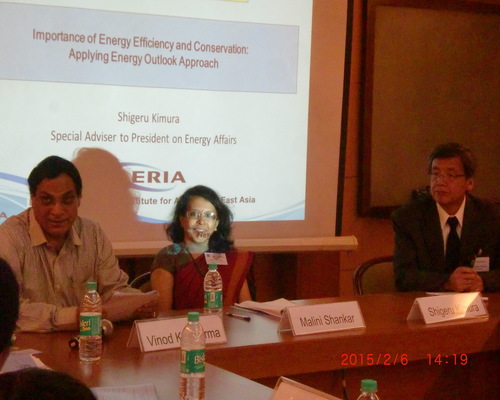
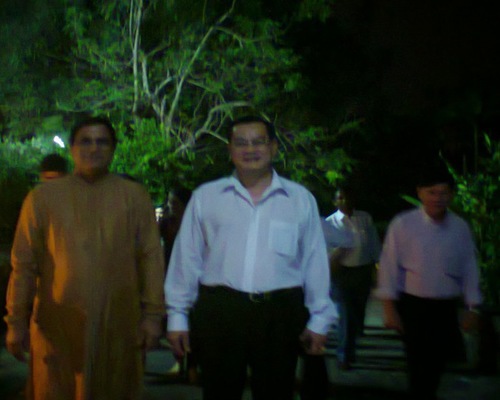
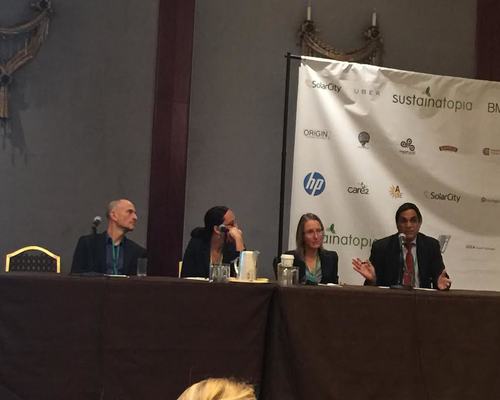
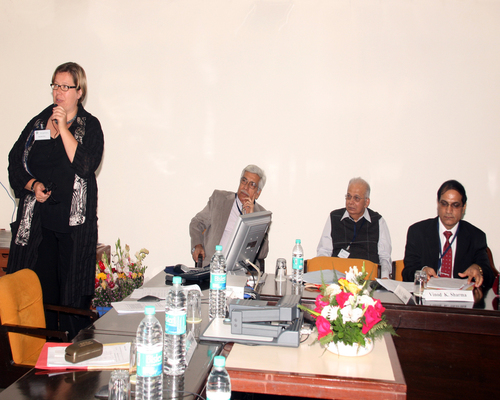
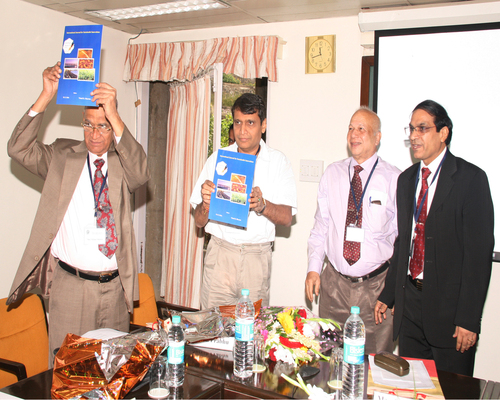
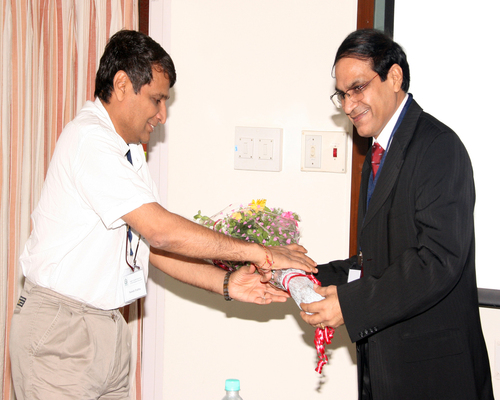 With best regards,
With best regards,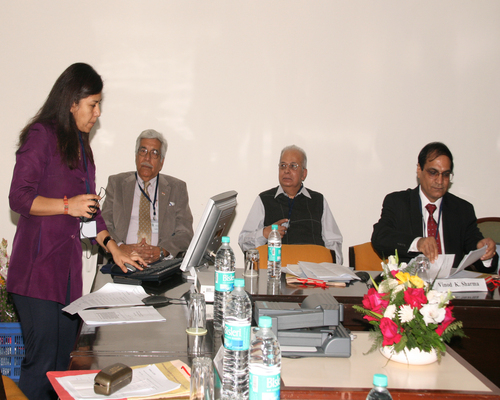
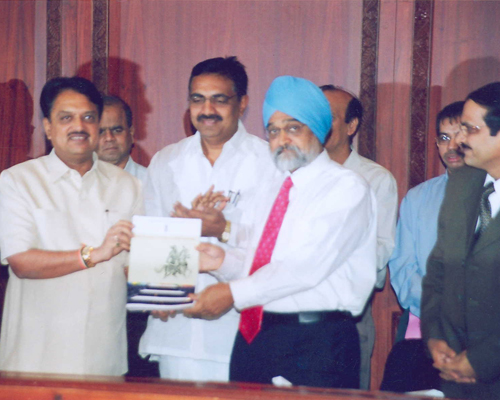
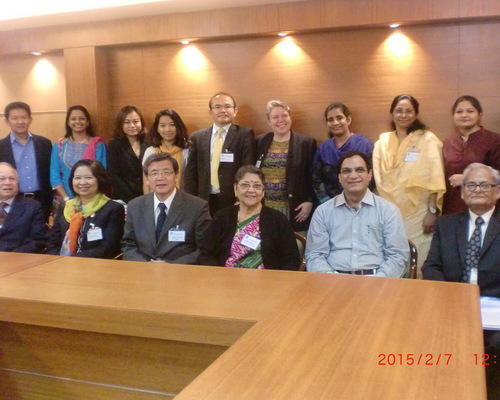
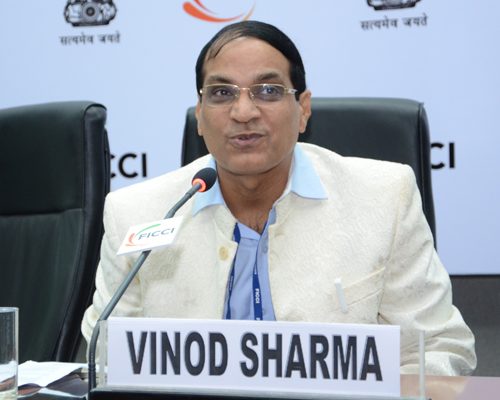




 beautiful collection of green nature
beautiful collection of green nature With best regards,
With best regards,
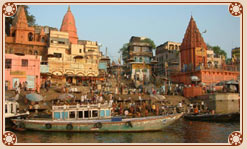 The land of Varanasi (Kashi) has been the ultimate pilgrimage spot for Hindus for ages. Often referred to as Benares, Varanasi is the oldest living city in the world. These few lines by Mark Twain say it all: "Benaras is older than history, older than tradition, older even than legend and looks twice as old as all of them put together". Hindus believe that one who is graced to die on the land of Varanasi would attain salvation and freedom from the cycle of birth and re-birth. Abode of Lord Shiva and Parvati, the origins of Varanasi are yet unknown. Ganges in Varanasi is believed to have the power to wash away the sins of mortals.
The land of Varanasi (Kashi) has been the ultimate pilgrimage spot for Hindus for ages. Often referred to as Benares, Varanasi is the oldest living city in the world. These few lines by Mark Twain say it all: "Benaras is older than history, older than tradition, older even than legend and looks twice as old as all of them put together". Hindus believe that one who is graced to die on the land of Varanasi would attain salvation and freedom from the cycle of birth and re-birth. Abode of Lord Shiva and Parvati, the origins of Varanasi are yet unknown. Ganges in Varanasi is believed to have the power to wash away the sins of mortals. 

